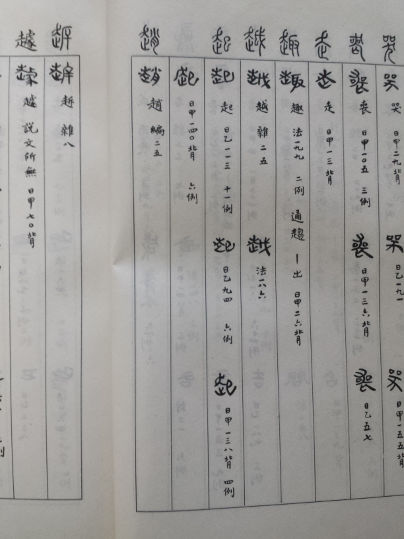In the kanji 道, 週 and so on, the ⻌ radical is written last, then the main element. The same for 建 and 延, in which the top-right component is written first, then the 廴 radical. But in 起, 走 is written first. All three radicals are used as "にょう" radicals, as far as I can tell, but 走 is written in a different order to ⻌ and 廴. Is there any reason why?
1 Answer
While other L-shaped partials, like @blutorange said in his comment (走鬼麦風爪 etc.), are only stylistic alterations when you use these parts in the left side of a kanji, ⻌ is inherently L-shaped, because it originates from the combination of left-sided ⼻ and bottom ⽌. The fact is widely attested in pre-Qin inscriptions or bamboo (wooden) slip recordings (third from left in the image below).
 (image from here)
(image from here)
It becomes known through recent successive discoveries of Warring States artifacts that Clerical Script (fifth from left) and Cursive Script (second from right), which modern writing derives directly from, are not descent of Seal Script (fourth from the left), but that of various popular styles preexisting Qin's reign. Thus ⻌ didn't come from left-sided 辵 and is an exception from the first place.
As for 廴, it turns out that this radical has multiple origins, most of them are deformation or misinterpretation of ⻌ and others. For example, you can see that the bottom-left part of 廷 ("palace") was originally L-shaped wall surrounding the court, but later metamorphosed into ⻌ or 廴-ish shapes. So this radical could be treated in the essentially same way to ⻌, and Kangxi Dictionary only contain 10 of kanjis that belong to 廴.
 (image from here)
(image from here)
PS
⻌ vs 走 series in Shuihudi Qin bamboo text:


-
Is 辵 not just that same combination of 彳 + 止? What makes the origins of 辵 different to ⻌, or could they not be called different versions of the same character / radical (as they are in most Chinese dictionaries)? Commented May 10, 2015 at 11:51
-
1@Sqrtbottle Yes, it is. That's not what I tried to deny. My argument is that left-sided 辵 isn't the direct ancestor of ⻌ but left-and-bottom 辵 is. Please see my newly uploaded pics, where ⻌ is already written mostly L-shaped in Warring States period, while 走 is not. Commented May 11, 2015 at 5:30
-
Makes sense to me now. Good pictures, by the way. Do you have a copy of the book? Commented May 11, 2015 at 8:04
-
No, it's a book in my college's library, where I was there today. I didn't note down the title, but it must be this one. Commented May 11, 2015 at 10:15

起越趣魑魅魍魎麺麩麹颱颶爬, the nyō feels like a full kanji to me where you just prolong the last stroke and let it protrude to the right for visual reasons. To me, these feel the same as any other left-right kanji such as僧解賠網肺請etc. On the other hand,建延込辺迅近look like one main part to me that is finished off with an L-shaped enclosure.⻌⻍⻎look like parts that don't really mean anything to me on their own, but走鬼麦風爪do.